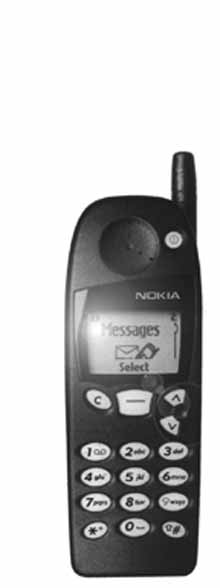
They are necessities, fashion statements, symbols of power and importance. Today, more than 700 million people, or about 12 percent of the world’s population uses them. Objects so tiny, they can dangle inconspicuously on a person’s key chain, until they ring, that is.
Cell phones have so effectively integrated themselves into our daily lives that some people can barely imagine a future without them. In Japan, for instance, these miniature devices have already outnumbered fixed-line telephones. Special features (not too common in the U.S.) range from checking e-mails to downloading video games.
Perhaps their most appreciated service came in the wake of the recent terrorist attacks on the World Trade Center, when victims contacted rescue workers via mobile phones from beneath 110 stories of rubble.
The mineral
But any joy and sorrow we experience from cell phones seem nearly trivial when considering that a key component embedded within its circuitry is used to finance wars, linked to massacres of endangered species and a market that exploits cheap labor.
That component is a rare metal called Tantalum, which is found in 3 billion-year-old soils primarily in Canada, Australia, Brazil and the Congo.
Tantalum is processed into a powder form for use in producing tiny capacitors, energy storage units that regulate voltages, and has enabled manufacturers to reduce the dimensions of cell phones in recent years. They’re also used in jet engines, game consoles like the Playstation 2, portable computers, and other electronic devices where size is crucial. According to industry experts, about 35 percent of these capacitors are used in mobile phones.
Enormous demand for the sophisticated component by familiar names such as Nokia and Motorola has pushed the price up 600 percent in recent years.
The devastation
Unfortunately for the Congo, which supplies the world with 15 percent of tantalum, its immediate effect and implications are very detrimental to the people and the environment. The nation is occupied by rebels from neighboring countries Rwandan, Ugandan and Burundian who have looted and smuggled thousands of tons of tantalum from the Congo into their countries to export to the global market. Profits are used to arm and train troops.
Congolese mine workers; directed by rebels warring over control of the sites, earn about $10 for each pound of unprocessed tantalum. These peasants toil in mines that legally belong to no one, and often use shovels they bought themselves, says a Washington Post report.
Many workers are children. According to The Industry Standard, some estimates suggest that 30 percent of schoolchildren in the northeastern Congo have abandoned school to earn money by excavating the mines.
Poor working conditions in the mines have created a wildlife crisis as workers desperately search for food, said the U.N. Report. Nearly 4,000 out of 12,000 elephants were killed in Garamba Park in the northeastern Congo between 1995 and 1999. In the tantalum-rich Kahuzi Park, the gorilla population has also dwindled and only 2 of the 350 elephant families remained in 2000.
The report further explained that the animals were victims of a well-organized system of poaching that violated international law.
The smuggling
What happens after excavation is uncertain says a Washington Post report. Either through the rebelled sanctioned SOMIGL monopoly or across smuggling channels, the tantalum makes its way to Kigali, Rwanda’s capital. From there, the Belgian airline, Sabena, flies twice a week to Europe, where eager “white-collar” capitalists set prices in London. Roughly half the shipments are transformed into powder by high-tech American companies such as AVX CORP, Kenet Corp. and a German company called H.C. Stark. Then it’s shipped to companies that use it in capacitors, who then sell them to cell phone manufactures and other industries.
Last year more than 400 million phones were sold globally, a 45 percent increase on the previous year. This year, mobile phone leaders expect to sell over 500 million.
Eventually, many of these handy devices find there way to places like NKU, where they are sold at bargain prices at booths in our University Center.
A friend of mine, who happens to be the vice-president of a student organization, recently received a cell phone from his father. He flips it open every 10 minutes it seems, using it to speak with group members, set-up meetings, organize rallies, and to make sure certain products are produced.
One day, I mentioned the intricate connection that cell phones have with problems occurring in the Congo. He appeared virtually unconcerned, turning his face away and frowning slightly, as if I had bestowed some junk knowledge to him.
I’m sure most Americans are like him. We enjoy many products while unconcerned about how they got here or what horrible conditions millions of slaves, “oops,” foreigners endured to add to our standard of living. And there’s nothing wrong with that . . is there?

